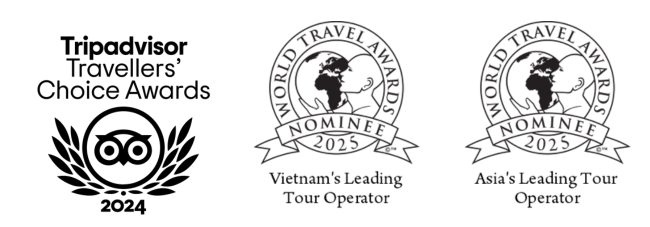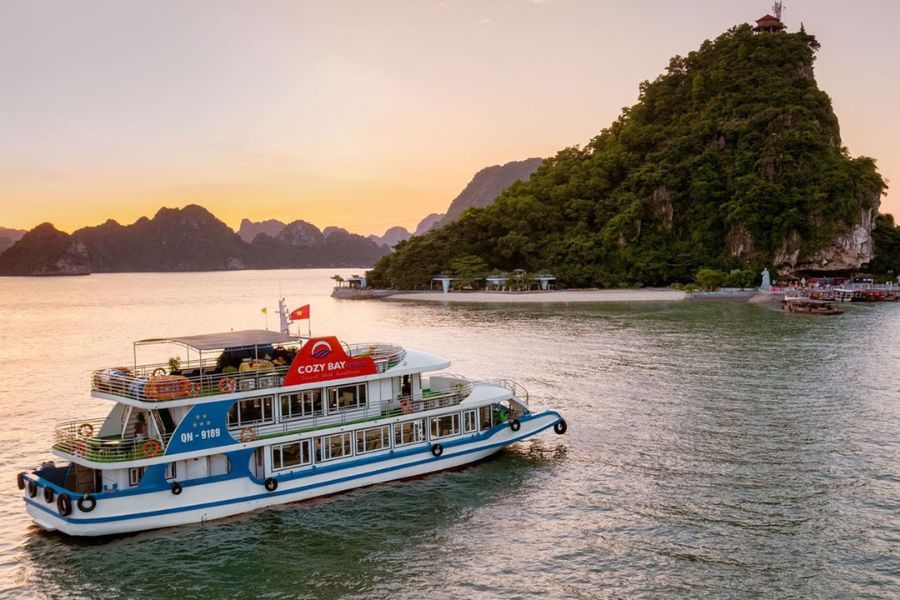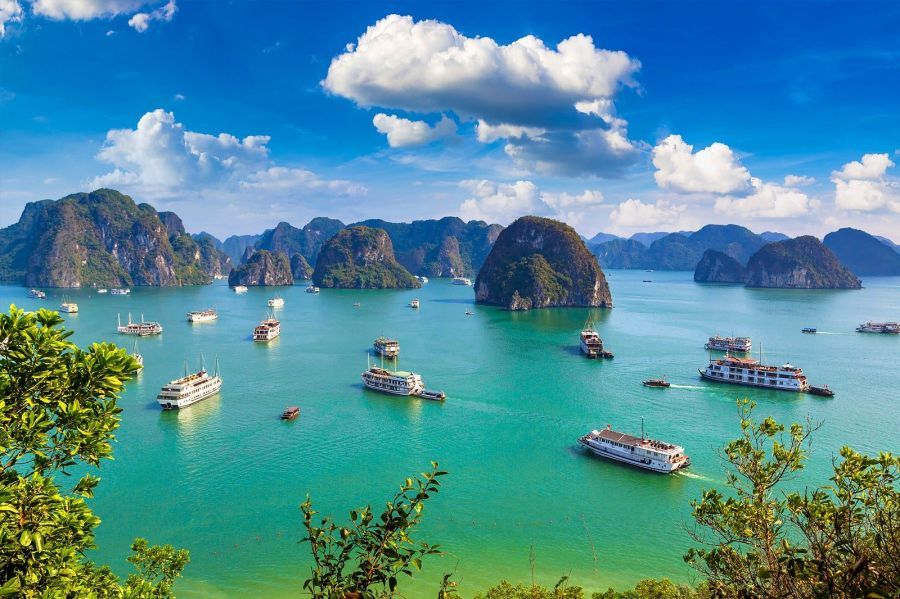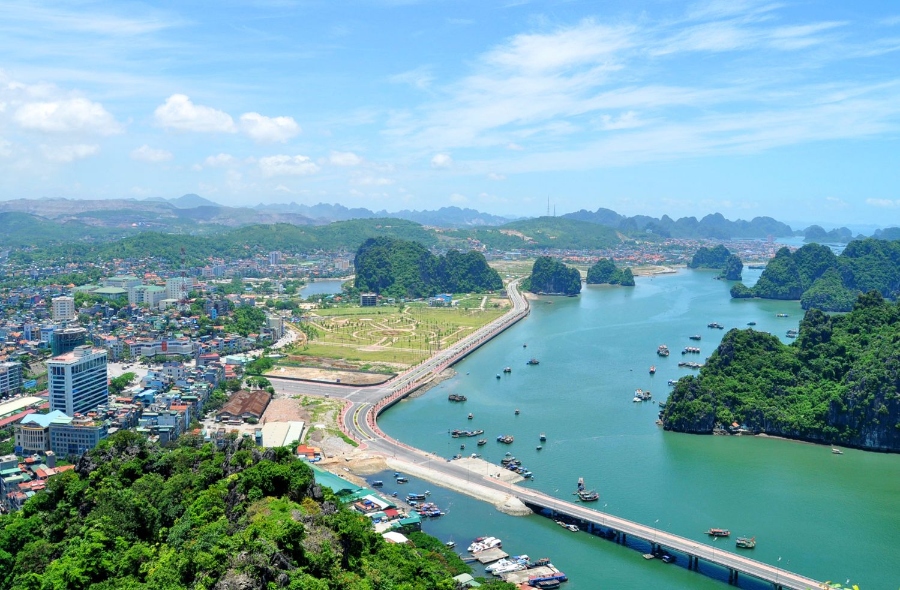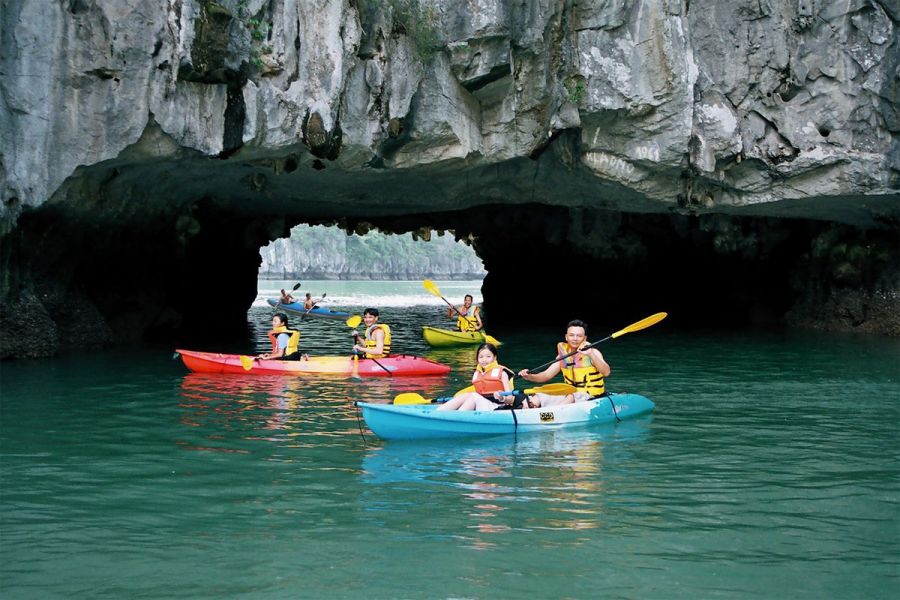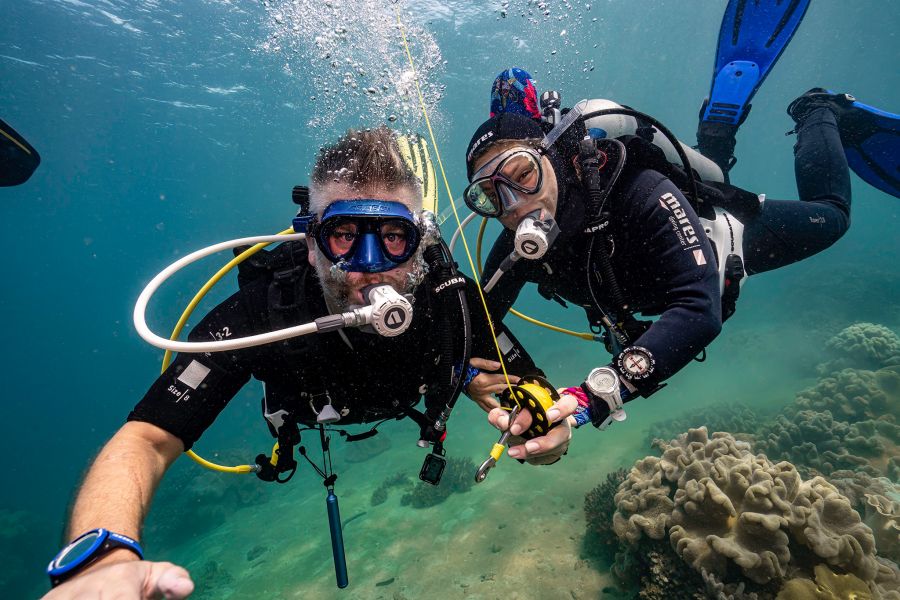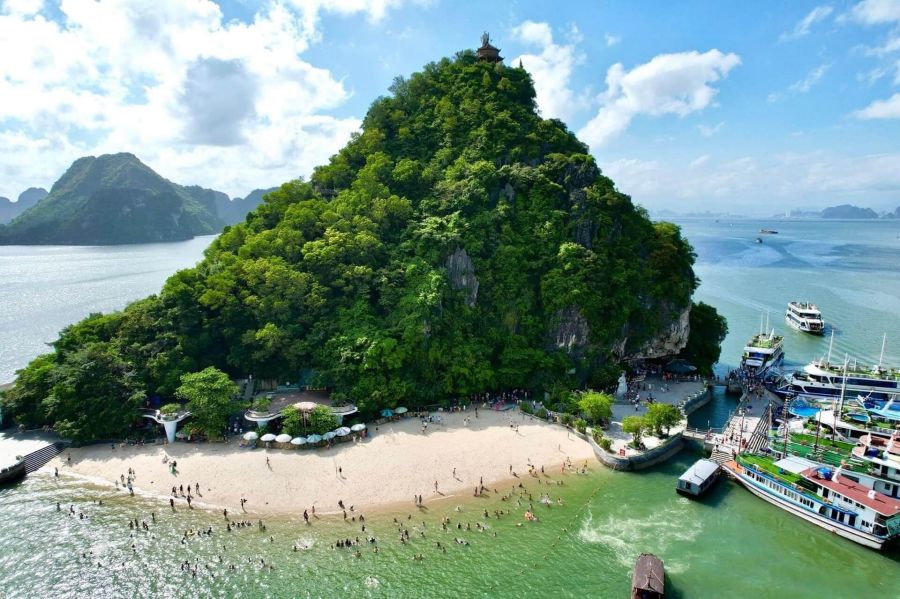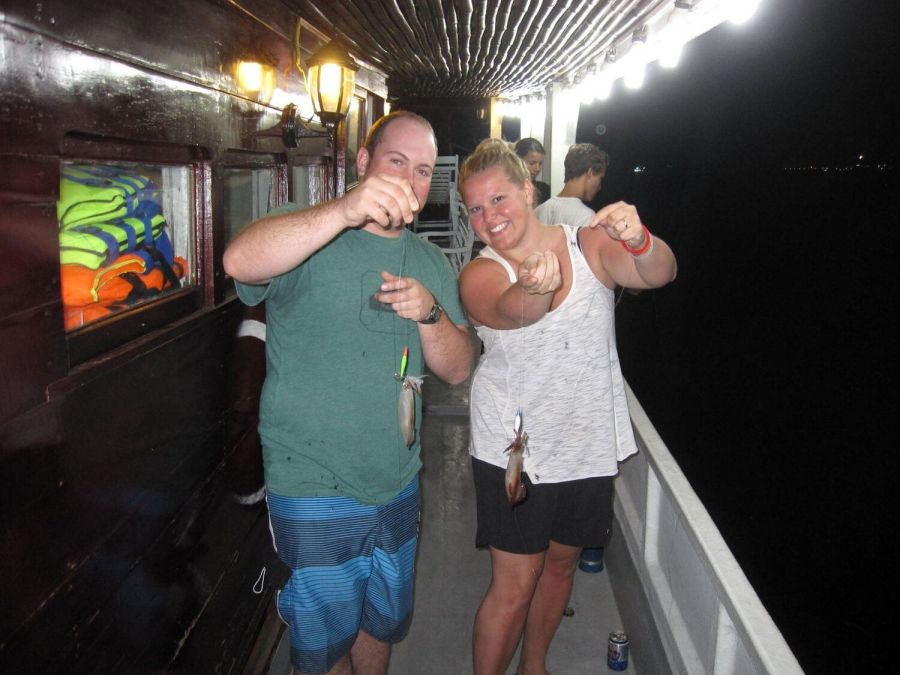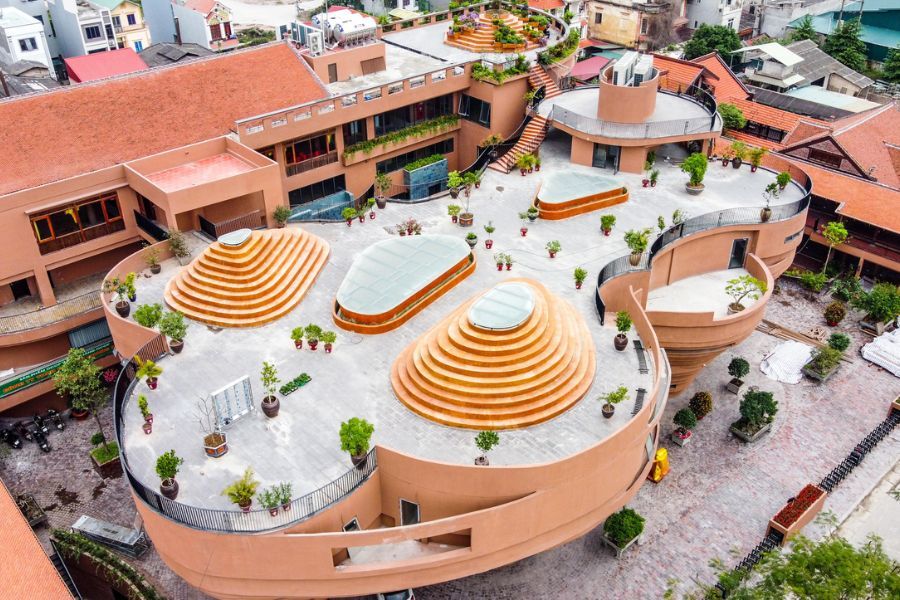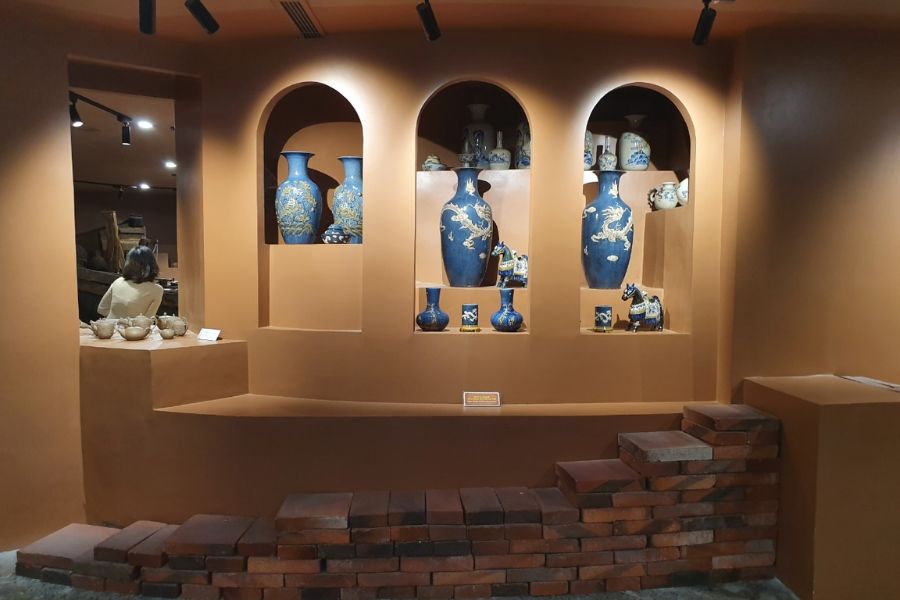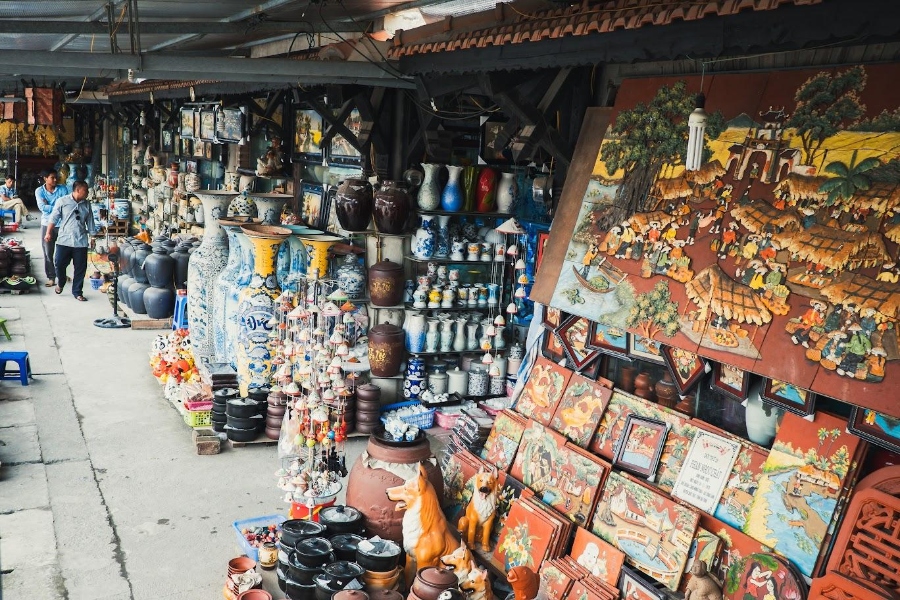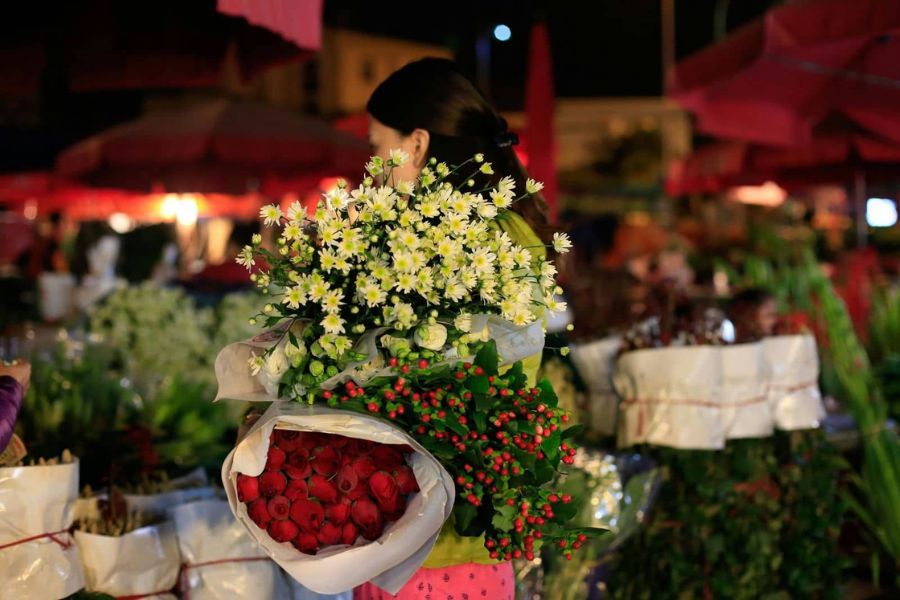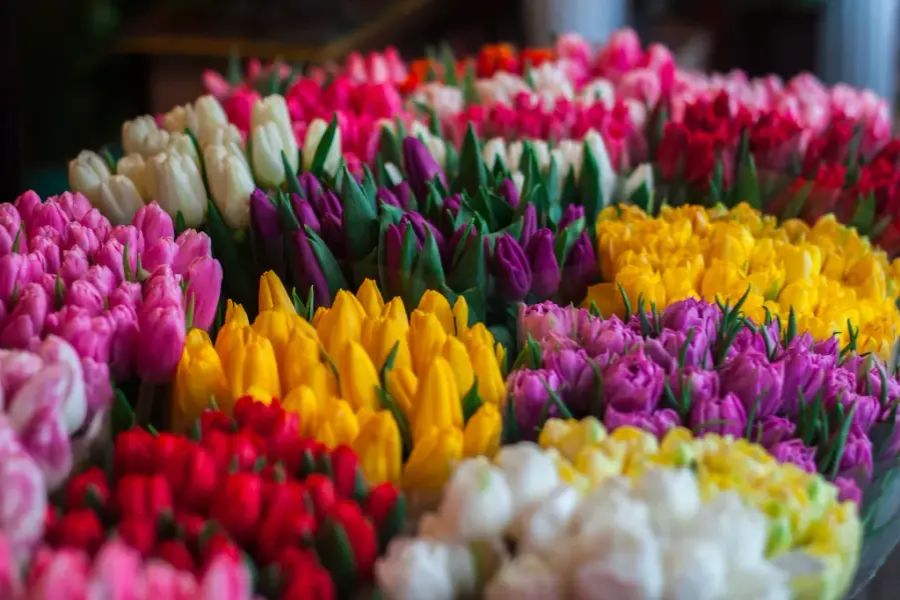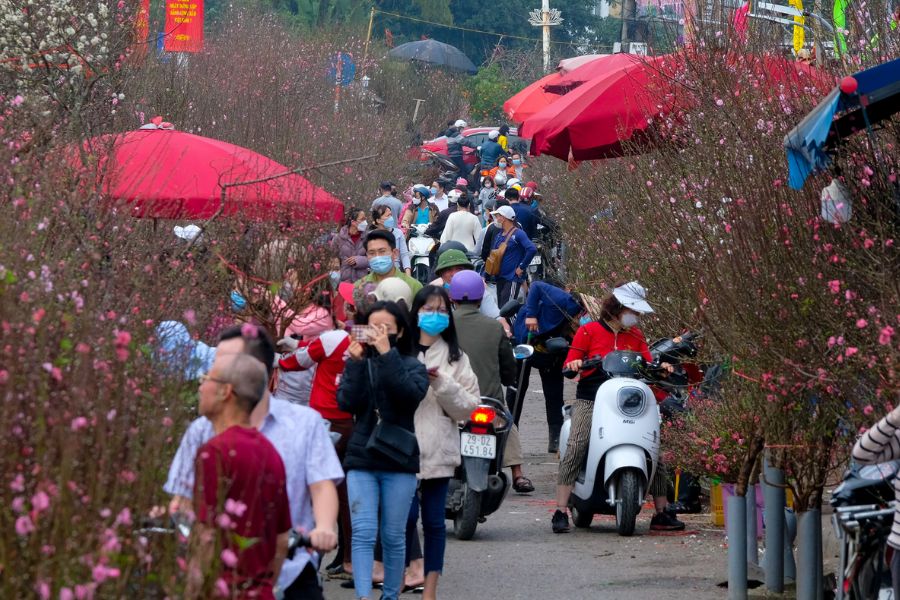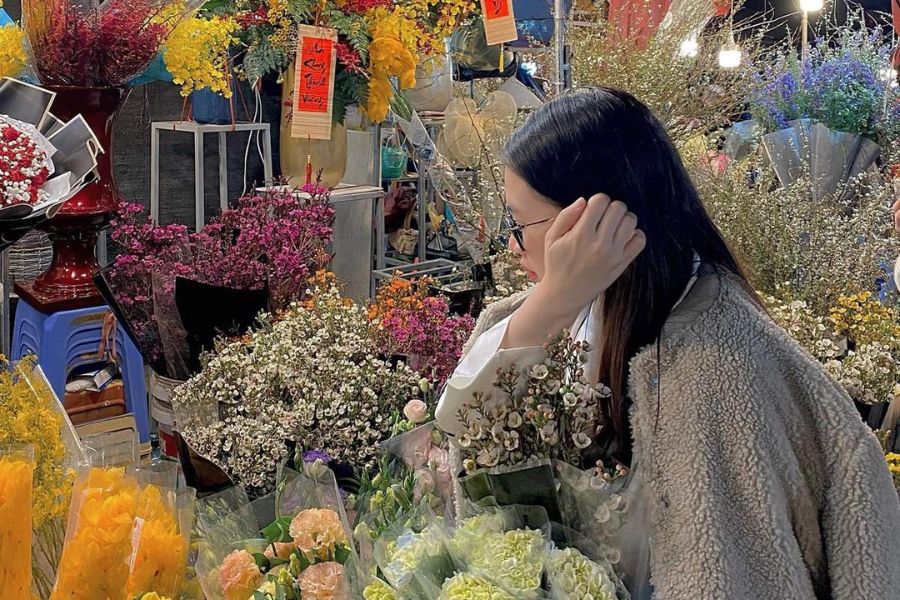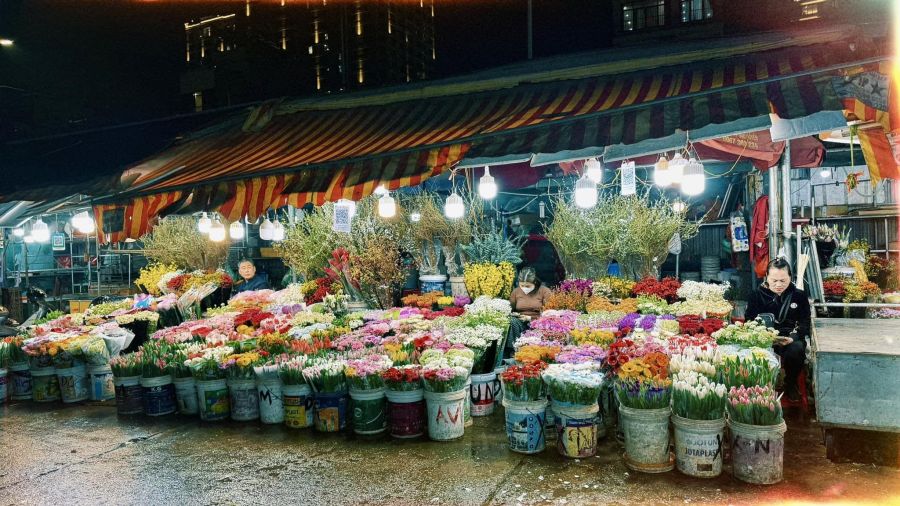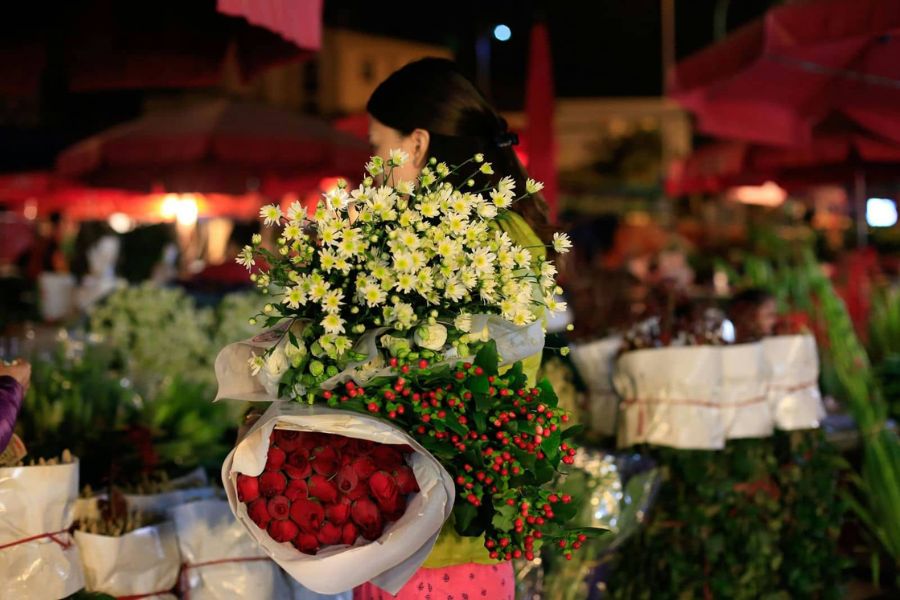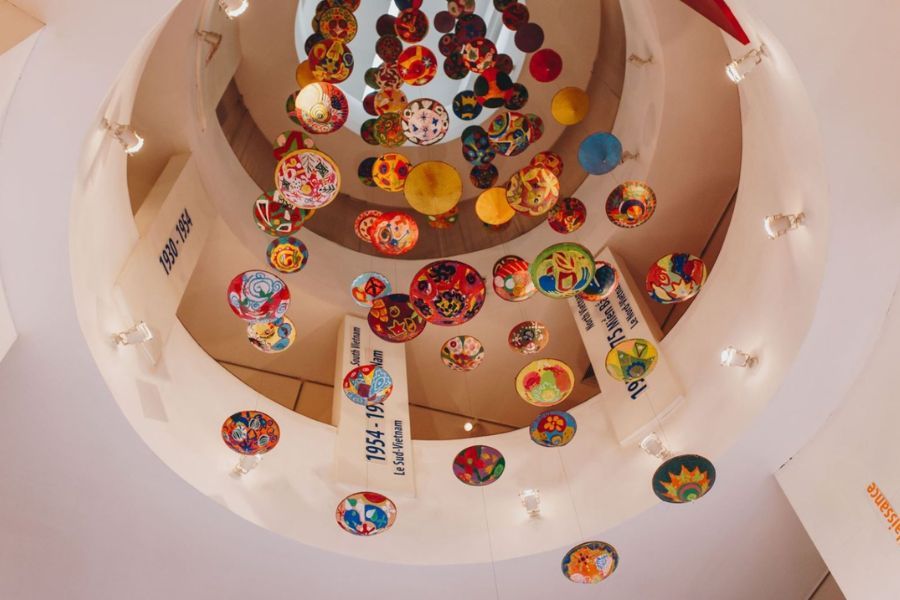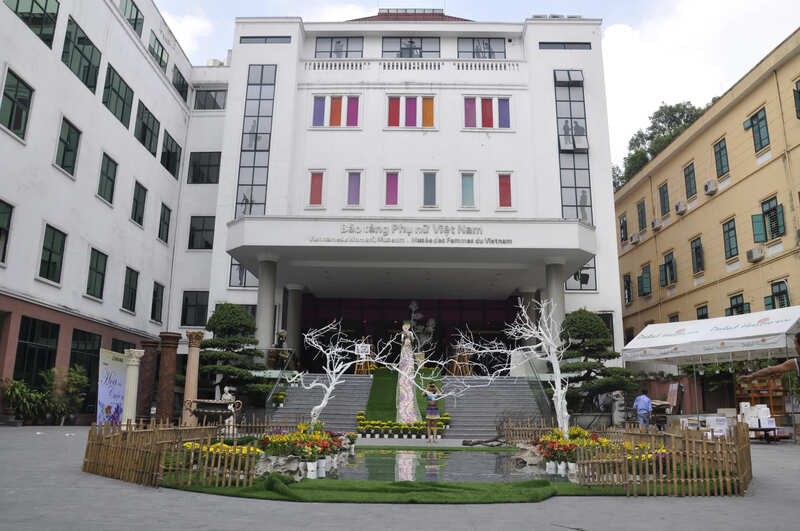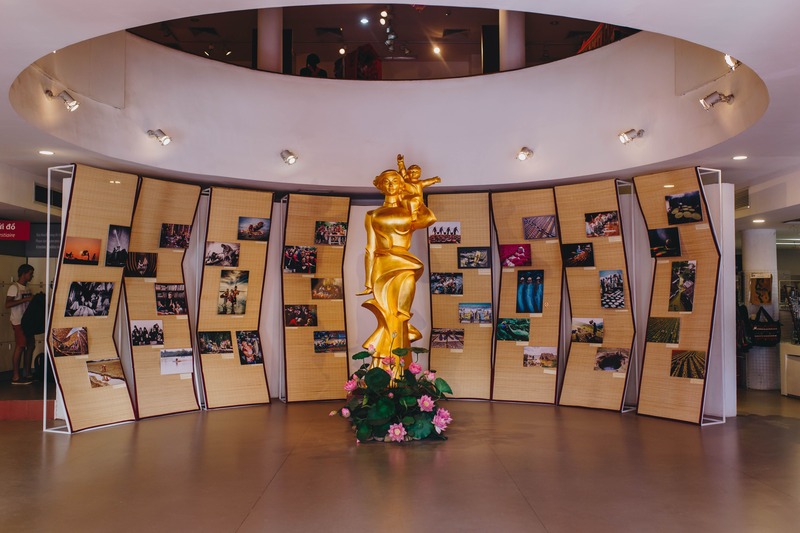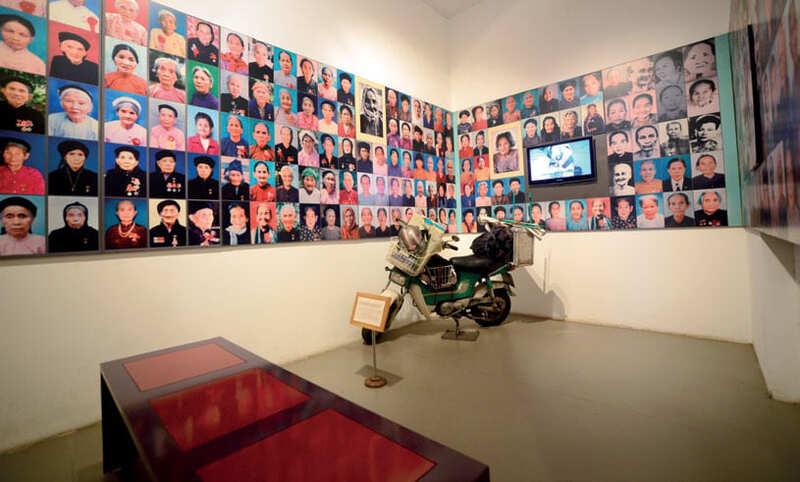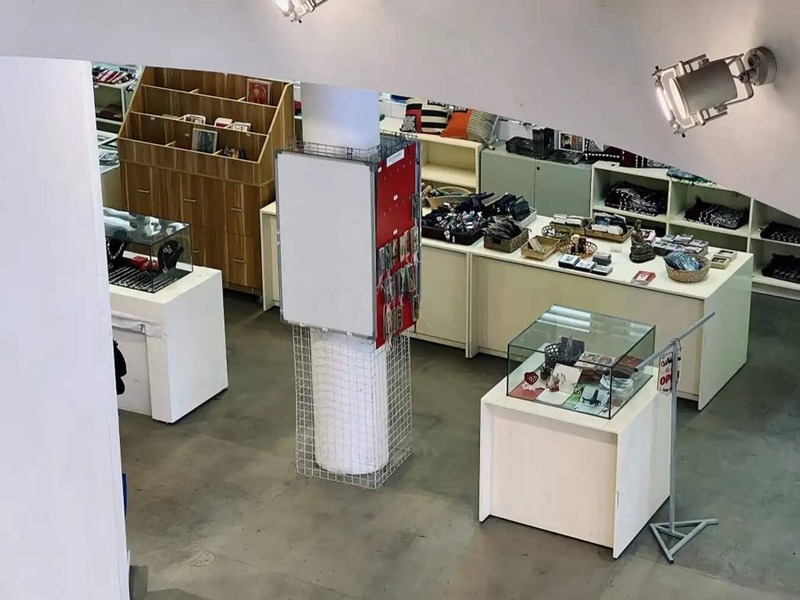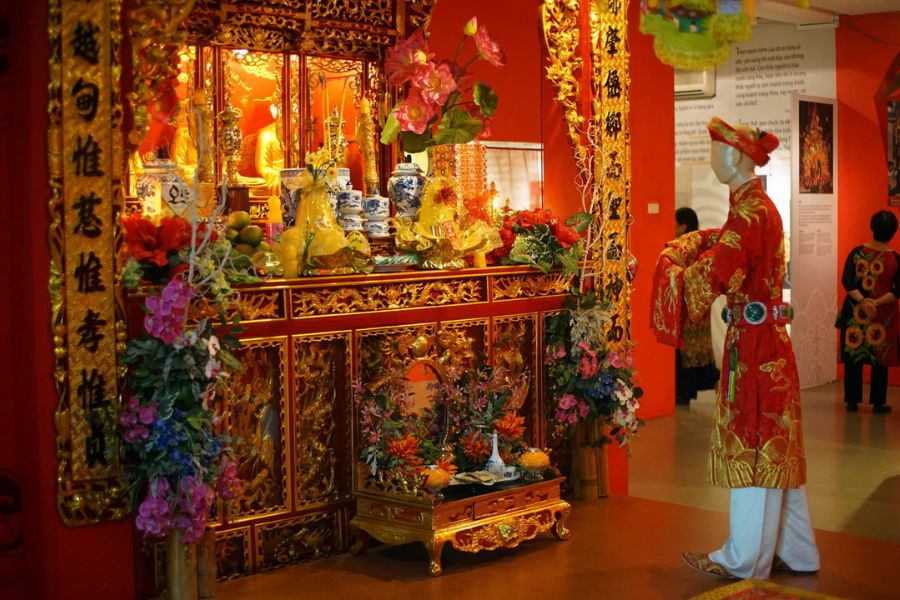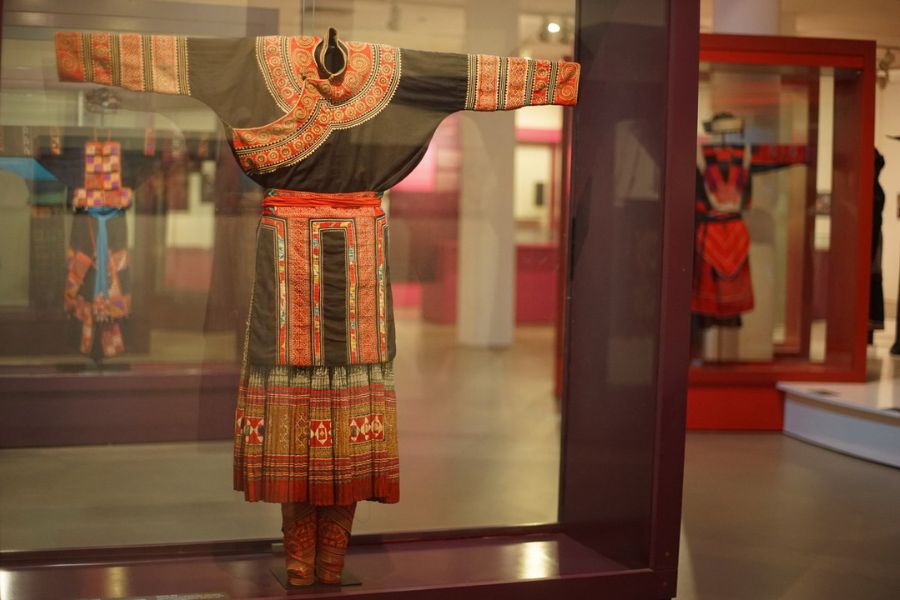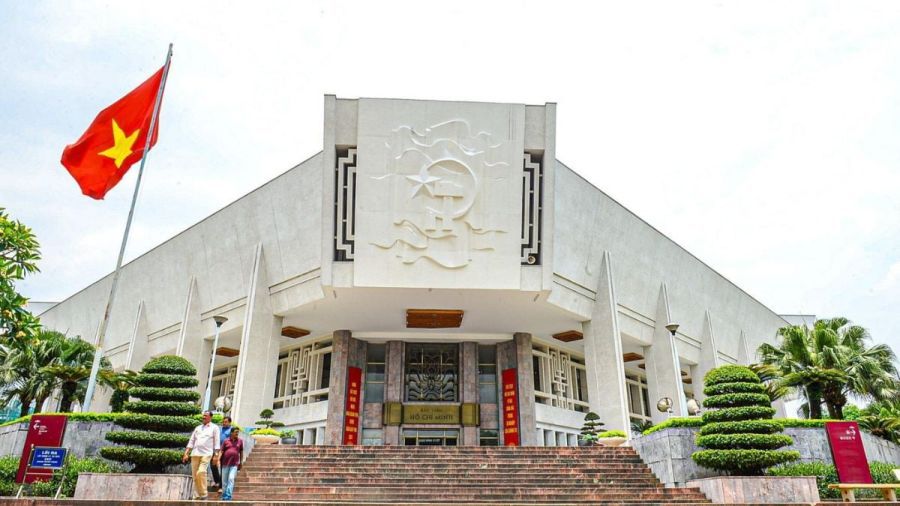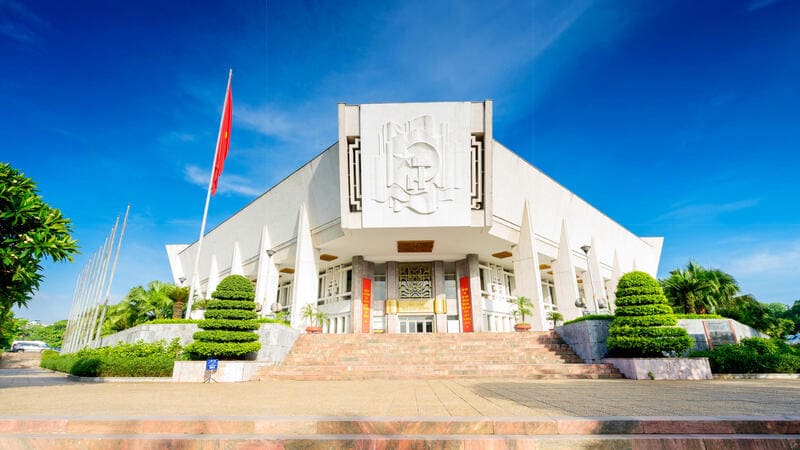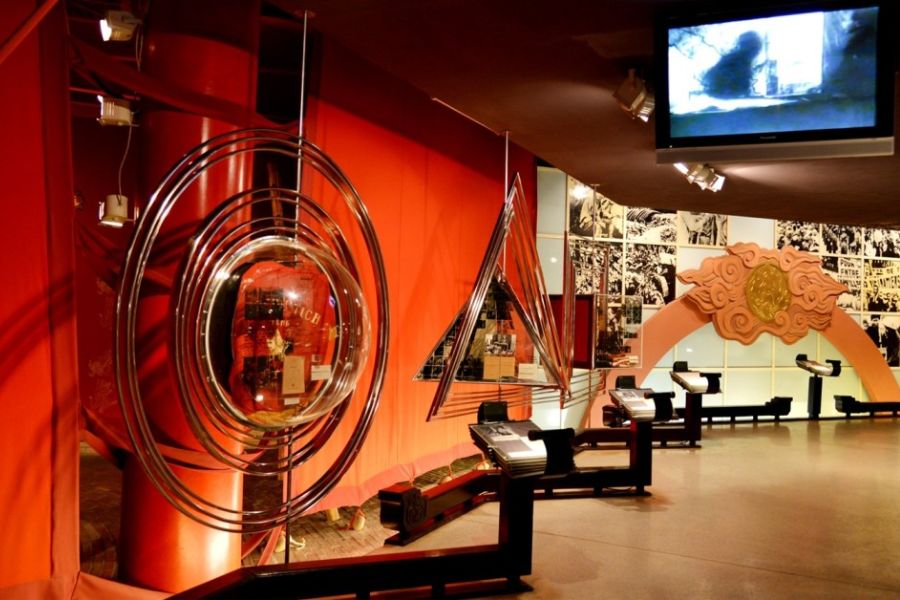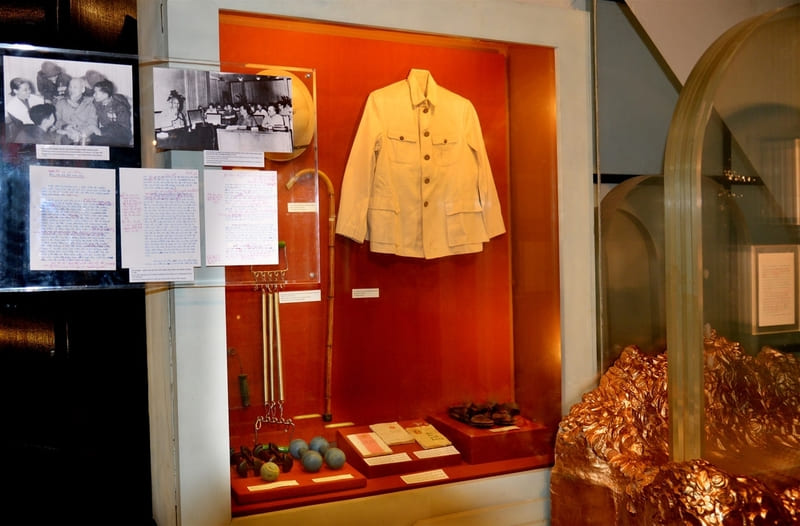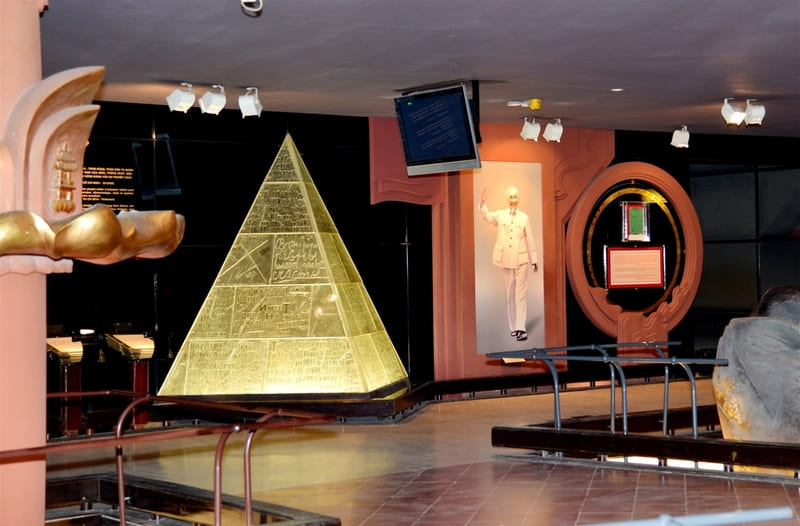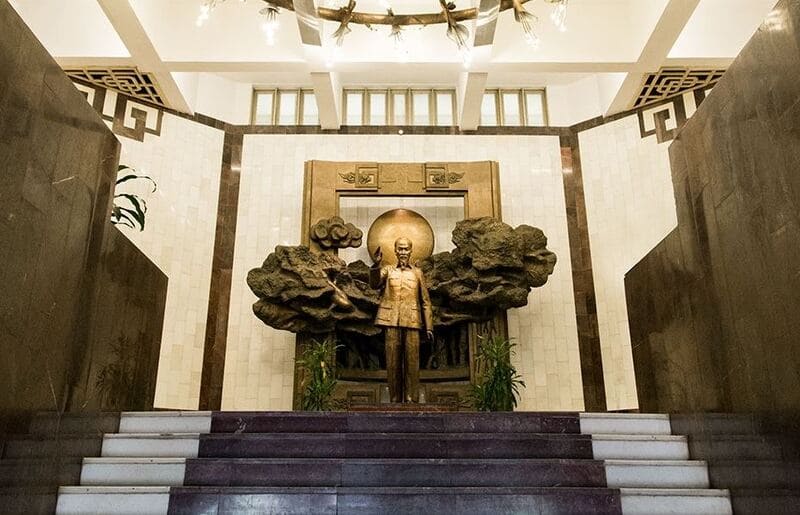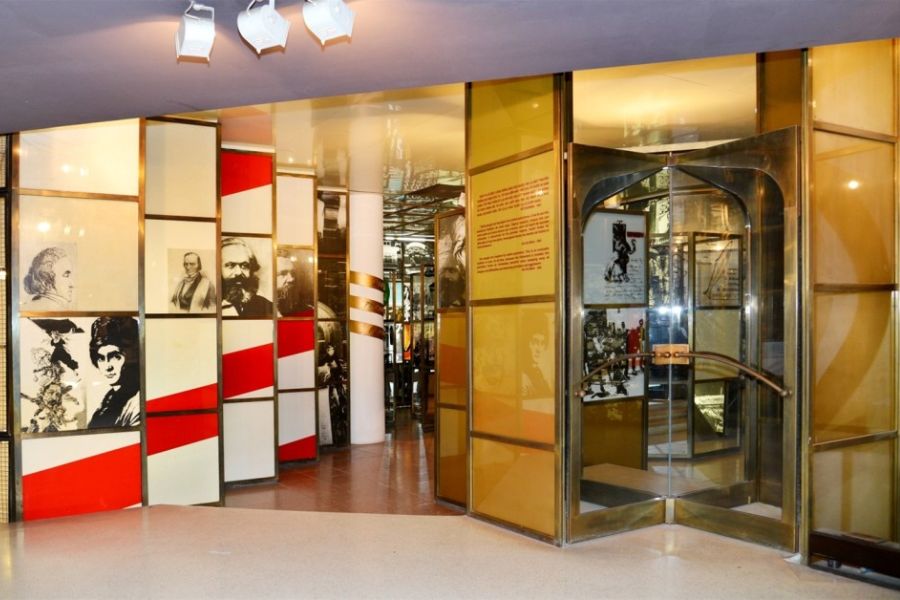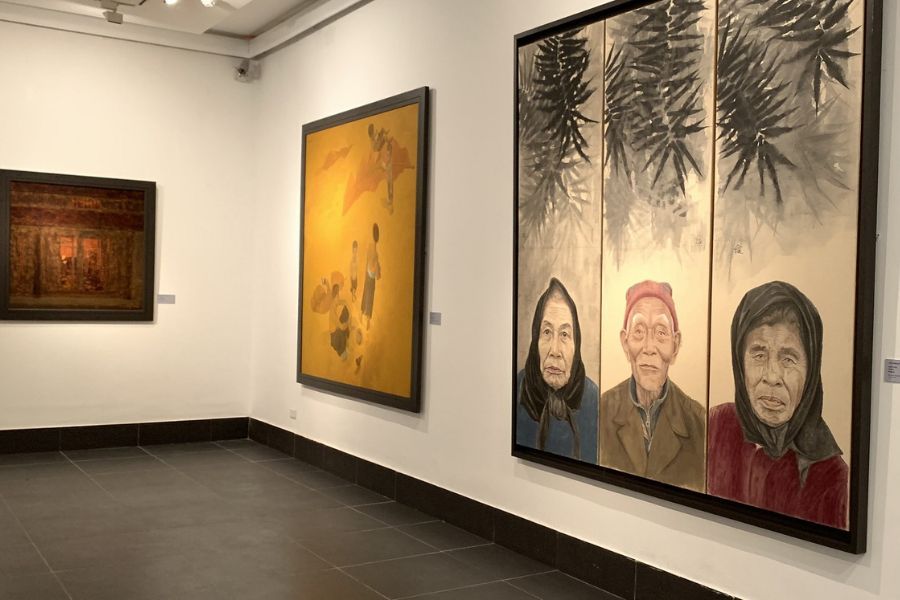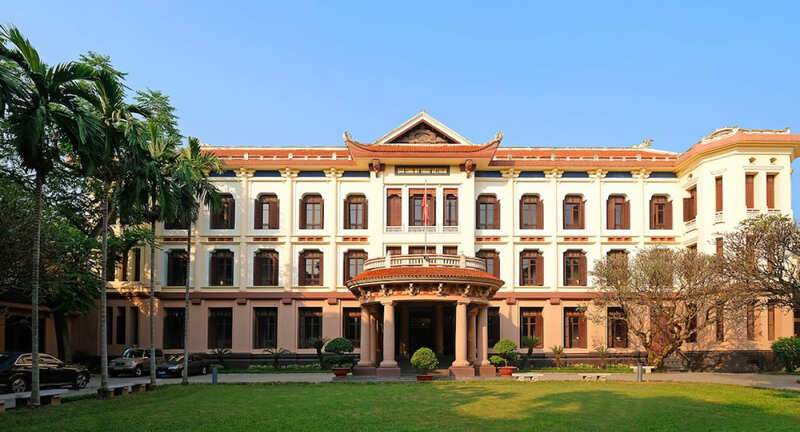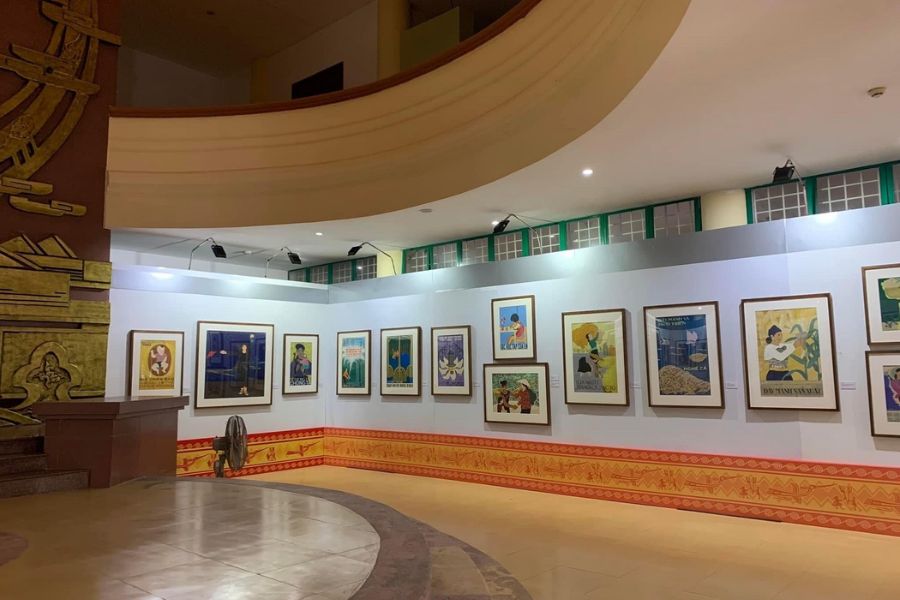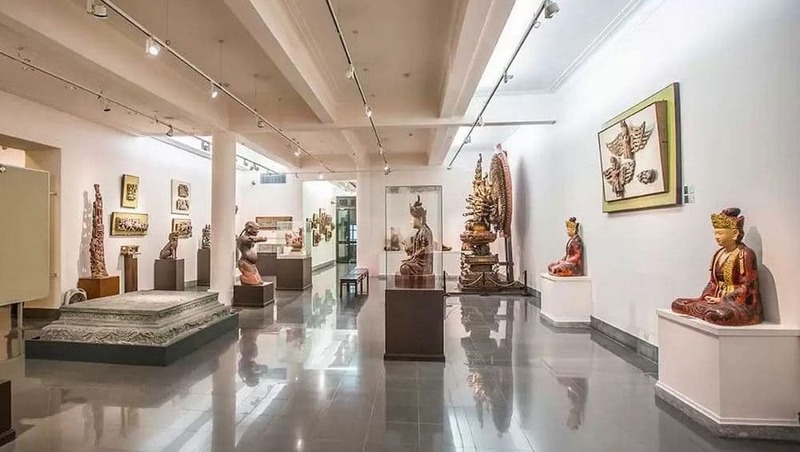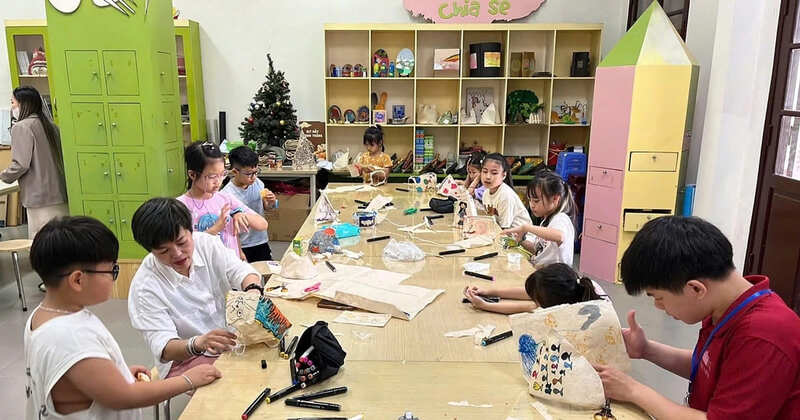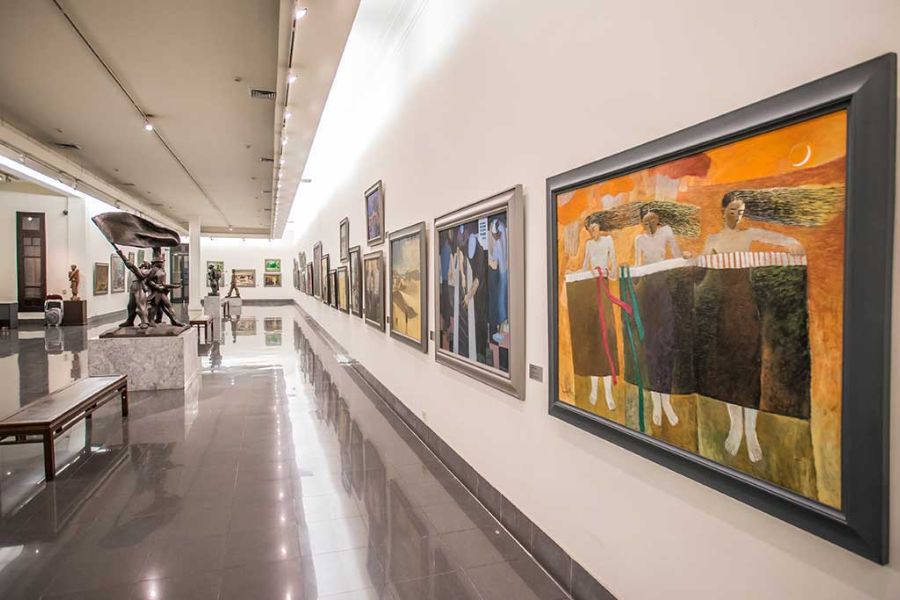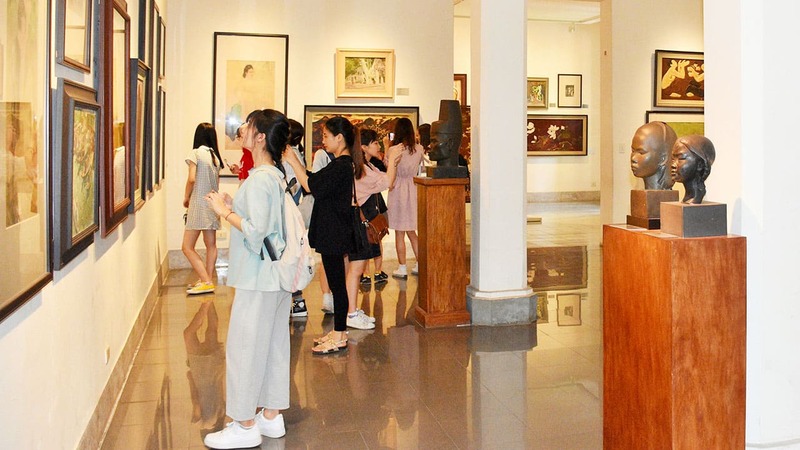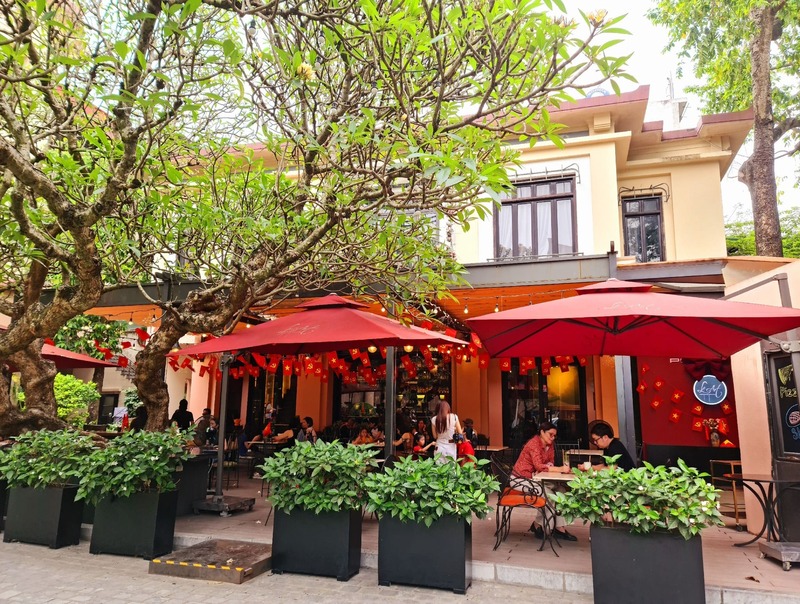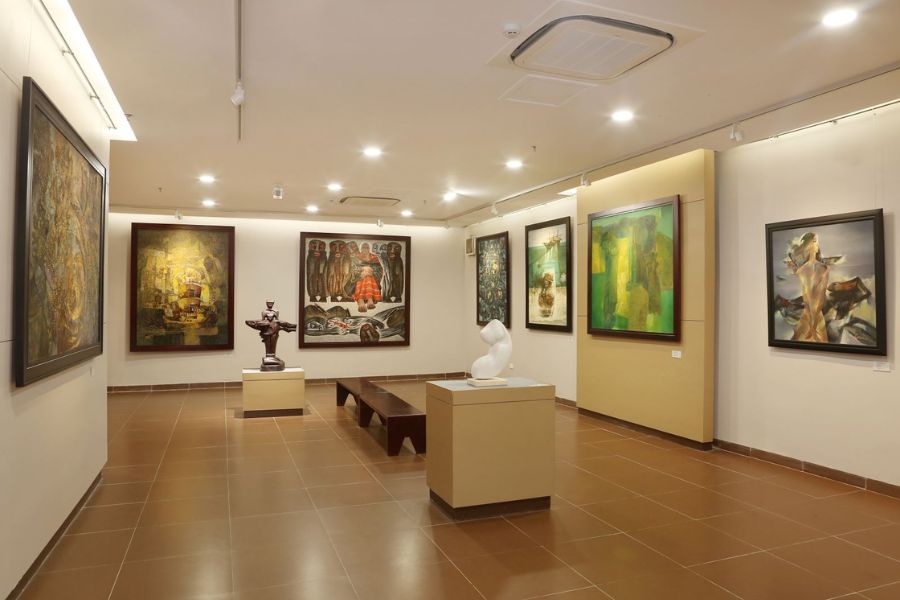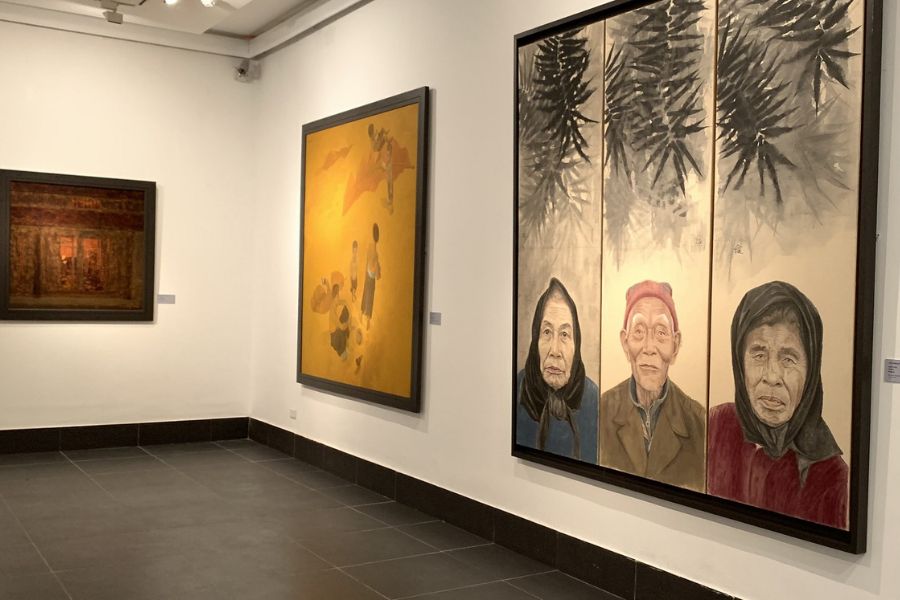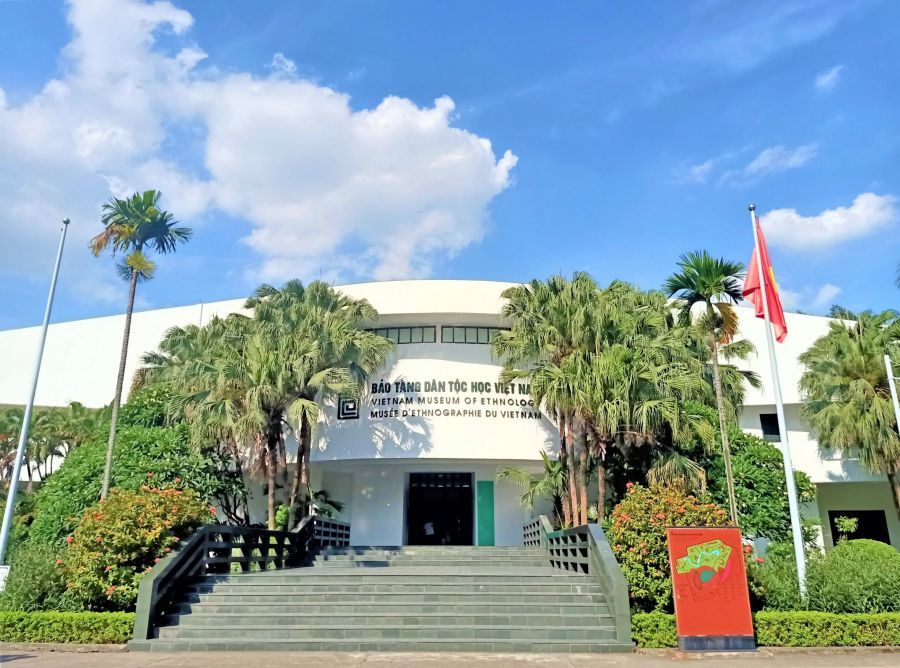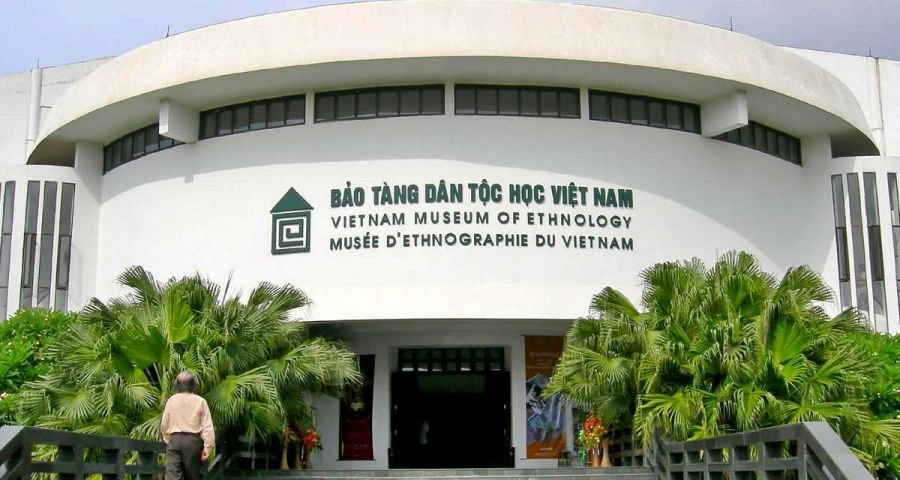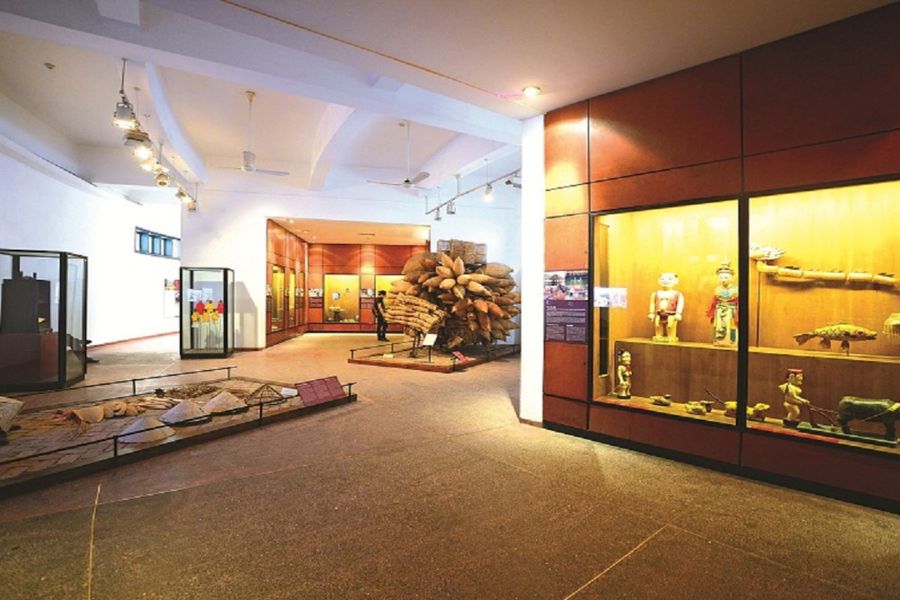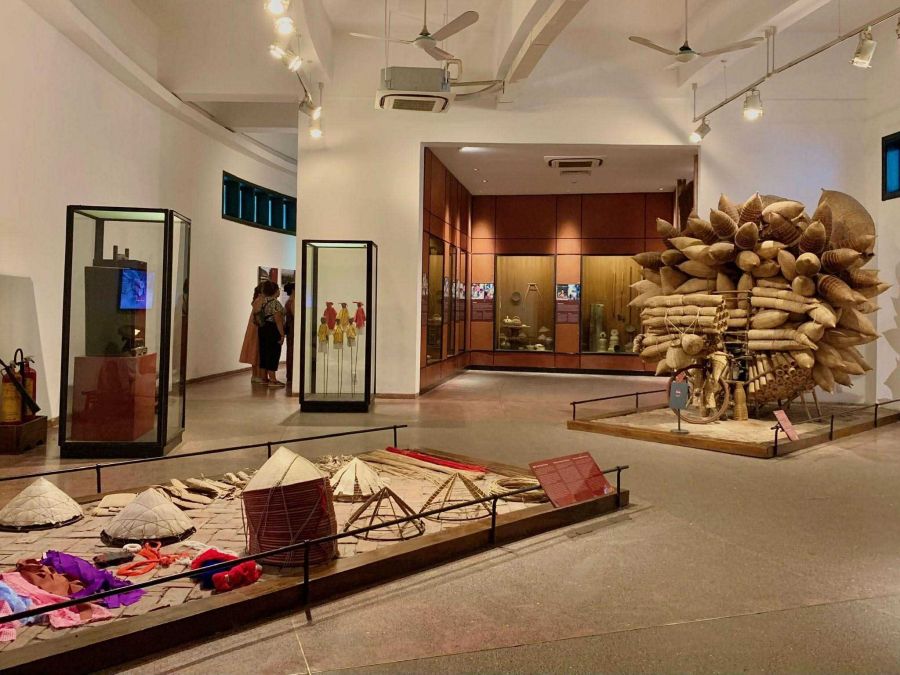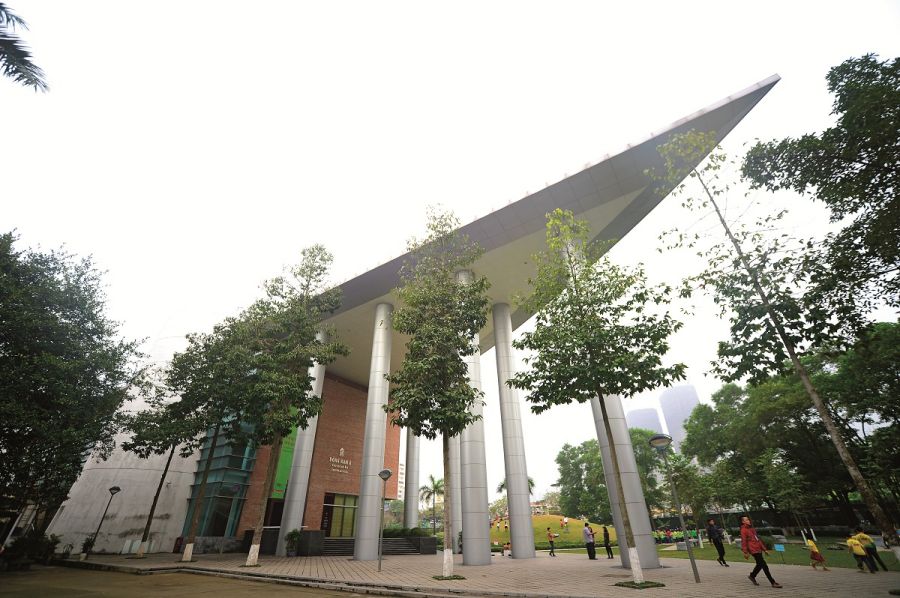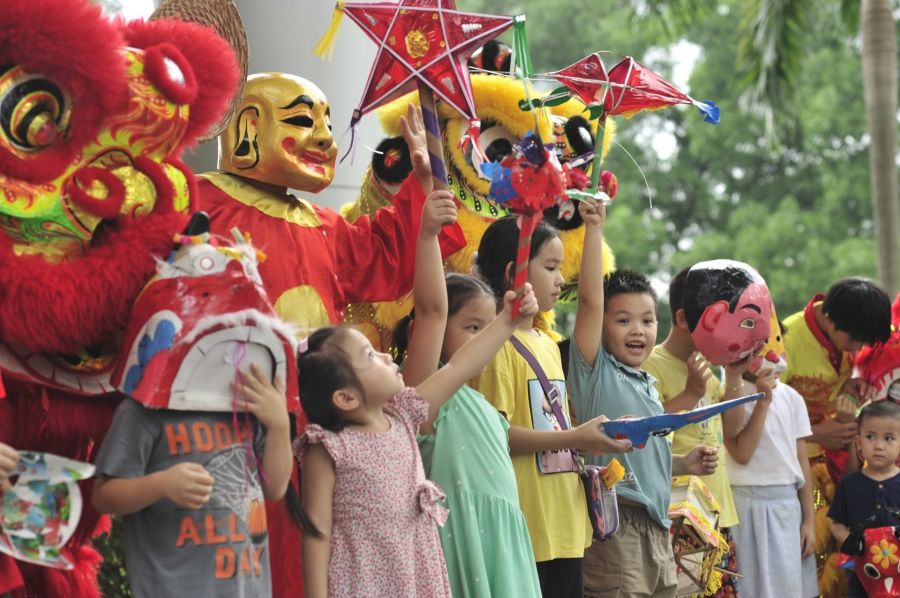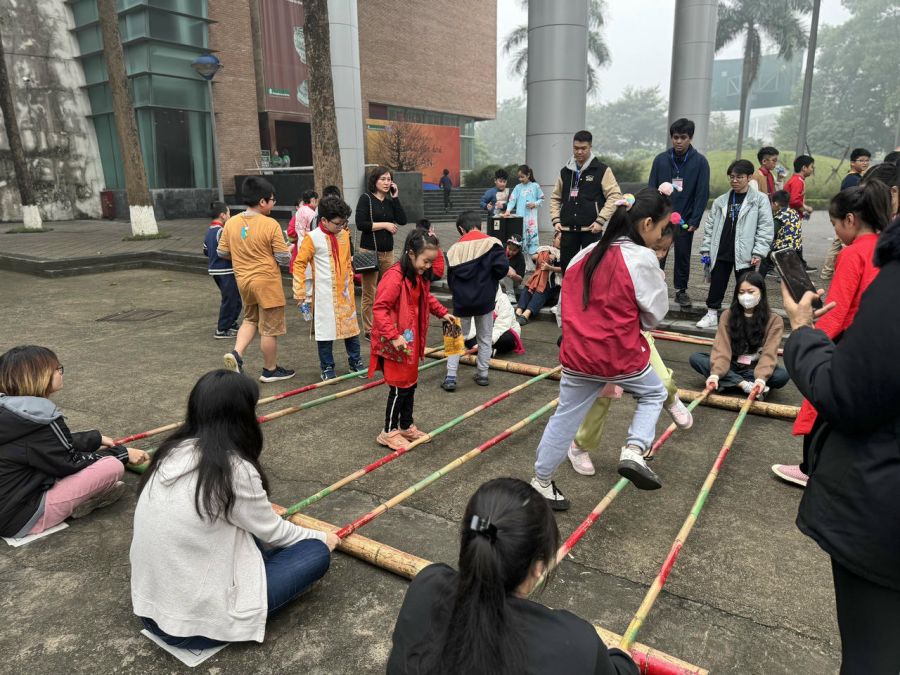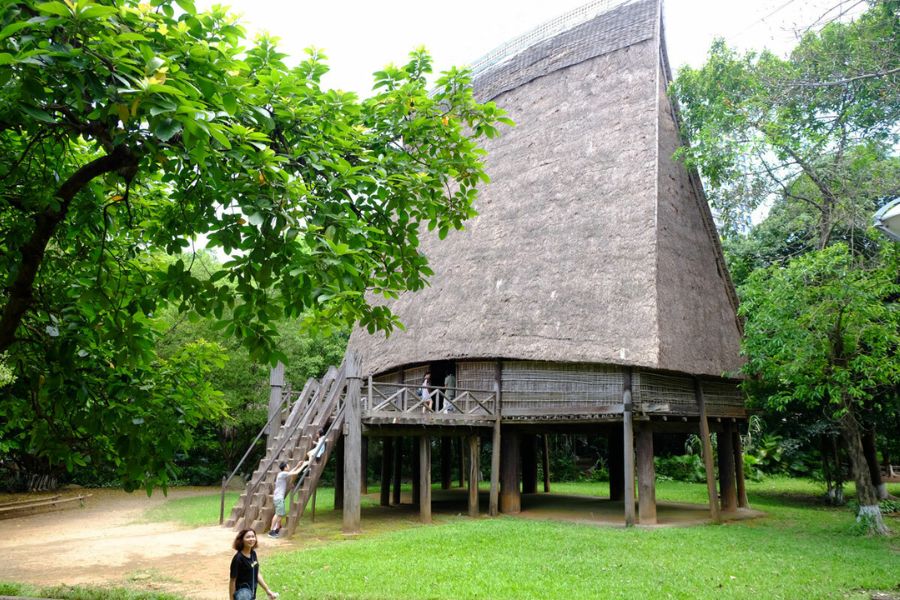Halong Bay in February: Weather, What To Do & Tips
Halong Bay in February is ideal, with tranquil weather, fewer crowds, and peaceful views. If you’re considering a visit during this time, there’s a lot to know, from the weather and activities to packing tips and travel advice.
Where Is Halong Bay?
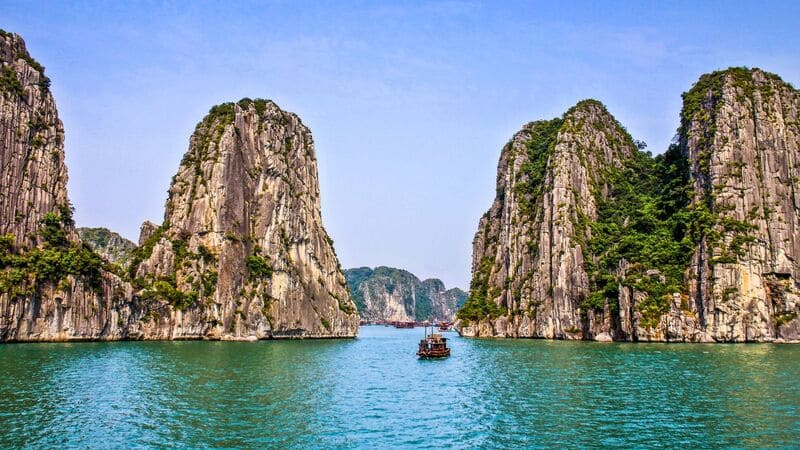
Halong Bay is situated in the northeastern part of Vietnam, and it is recognised as a UNESCO World Heritage Site. Located in Quang Ninh Province, Halong Bay is 165 km from Hanoi. The bay is renowned for its emerald waters and thousands of towering limestone islands, each topped with a rainforest.
February is always an ideal time to travel to Halong Bay when you can enjoy a little cold and silence in the temperate weather. Following the hustle and bustle of the Tet holiday, February is a rather peaceful period, perfect for nature lovers and anyone in need of a tranquil getaway.
What Is The Weather Like In Halong Bay In February?

Halong Bay weather in February is cool, dry, and stable. It’s one of the best months for a sightseeing trip to Halong, especially for those who favor daytime cooling over humid summer heat.
There tends to be a lot of clouds in the sky, and the morning mists and haze are common. Visibility is diminished during that time. However, the mysterious aura perfects the limestone karsts. There’s little rain, and February hardly ever sees extreme weather.
Also, Halong Bay temperatures in February remain comfortable throughout the day, with the evenings cooling off a bit. It won’t get too freezing in the daytime, but if you take a boat trip in the evening, you might need a jacket or sweater. It’s excellent weather for sightseeing, taking photos, and exploring nature without sweating beneath the sun.
| Weather factors | Details |
| Daytime temperature | 18°C – 22°C |
| Nighttime temperature | 14°C – 17°C |
| Rainfall | 20–30 mm (low rainfall) |
| Humidity | Around 75% |
| Fog and mist | Often present in early mornings |
What to See and Do in Halong Bay In February
February is a great time to discover the peaceful side of Halong Bay. From cruising past limestone islands to exploring enclosed caves and savoring life at a local pace, February is a great combination of nature and culture. The following are some of the top things you can do on the Halong Bay trip:
Explore Limestone Karsts And Caves

Halong Bay is famous for its towering limestone islands, also known as karsts. Many of them have incredible caves. You can go on a boat tour to see them. These limestone karsts were created over millions of years by the forces of erosion. The caves themselves are geological marvels.
The popular caves available are Sung Sot Cave (Surprise Cave), Thien Cung Cave (Heavenly Palace Cave), and Dau Go Cave (Wooden Stakes Cave). You will see impressive stalactites and stalagmites, which are rock formations that hang from the ceiling or grow from the floor. Lights within the caves illuminate their beauty. If you are on a tour, the tour guides may share fun facts and interesting history about how they were built.
Go Kayaking Or Canoeing

You’ll be paddling through hidden lagoons and around small islands. It gives you the view that nobody else has, the ability to go places larger boats cannot. You can explore through a secret grotto or take an up-close look at the base of a great rising karst.
Common places for kayaking are Luon Cave and the Dark and Bright Cave. You will always be given life vests, and the tour operators do make sure things are safe. It’s fun to kayak in February because the air is fresh and you don’t have to worry about sweating.
Visit Floating Fishing Villages
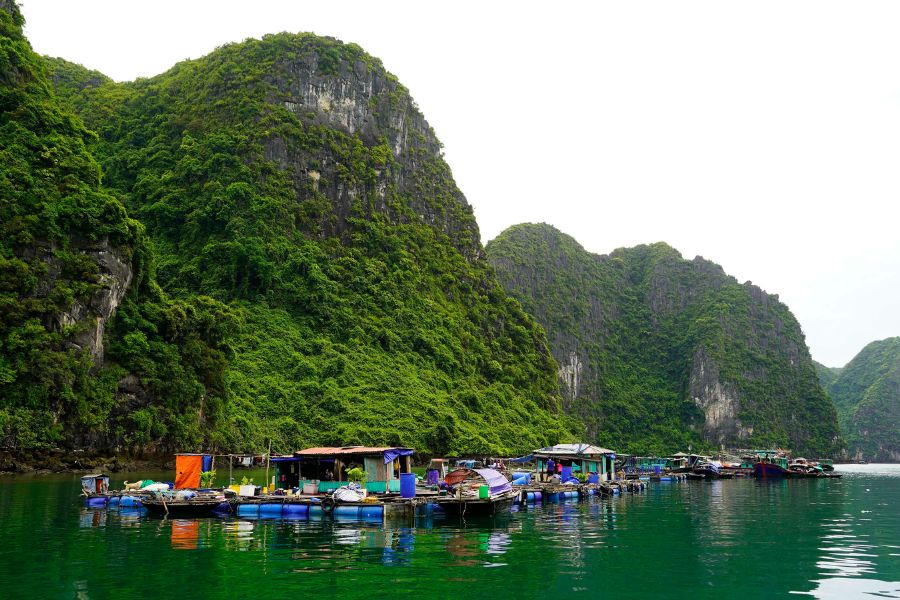
Halong Bay also has a number of floating fishing villages. Local communities inhabit these villages. You could go and see what their daily life and unique culture are like. Cua Van and Vung Vieng fishing villages are the two most well-known. If you have a chance to visit, you’ll see homes and schools, even little shops, all floating on the water. The people here rely mostly on fishing or pearl farming.
Exploring these villages allows you to understand local customs and learn about the resilience of fishermen and their families living in Halong Bay. Additionally, you may even come across some small handmade souvenirs created by the villagers.
Enjoy A Tai Chi Session On Deck

Most cruises in Halong Bay have Tai Chi in the morning. These sessions tend to take place on your cruise ship’s sun deck. Getting up in the morning in Halong Bay in February and doing Tai Chi as the sun rises over the bay is just fantastic.
It’s a lovely way to begin the day, with simple, slow, gentle movements to ease you in and give you plenty of time for breathing. The February morning is brisk, a refreshing change. No matter if you’re a beginner, the instructors are friendly and walk you through the moves. Great for unwinding your body and mind as you take in the beautiful scene.
Relax On A Cruise Ship

One of the best ways to experience Halong Bay in February is on a cruise. There are many types of cruises, from luxury ships to more budget-friendly options. Overnight cruises (1-night or 2-night) are usually available on most cruises, so you can maximize exploring the bay.
A cruise allows you to relax and enjoy the scenery from comfortable surroundings. You have views of the bay from different angles as the boat weaves through the islands. Even on a foggy day, the views are often more visually interesting and dramatic. Cruise ships are equipped with everything you have always expected from land-based holidays, including restaurants, bars, sundecks, and cosy cabins.
Trekking On Ti Top Island
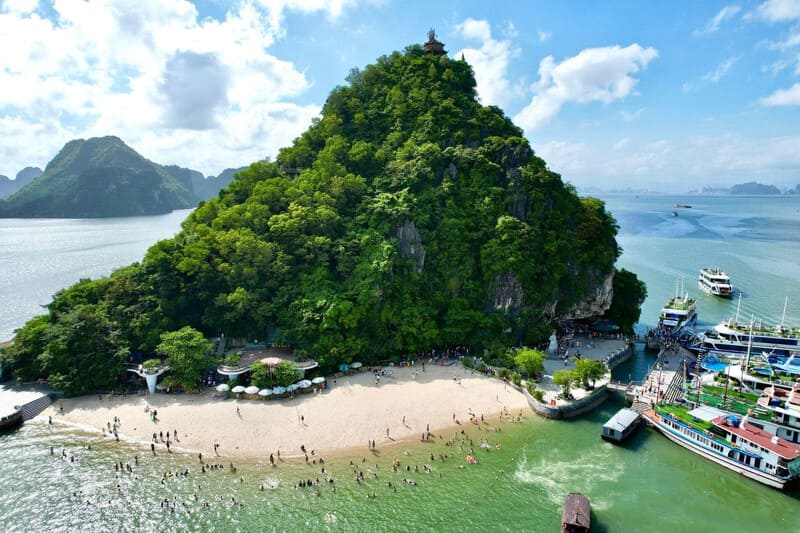
The Ti Top Island attracts many tourists. It has a lovely sandy beach and a superb lookout point. If you’re up for it, you can make a vertical climb to the top of the island for a bird’s-eye view of the entire bay. It’s a climb of around 400 steps, and it’s uphill in parts, but the reward is breathtaking.
The cooler temps in Halong Bay in February make your climb bearable. You won’t have to grapple with the searing heat. From the top, you get amazing shots of the limestone karsts rising from the green water.
Squid Fishing At Night
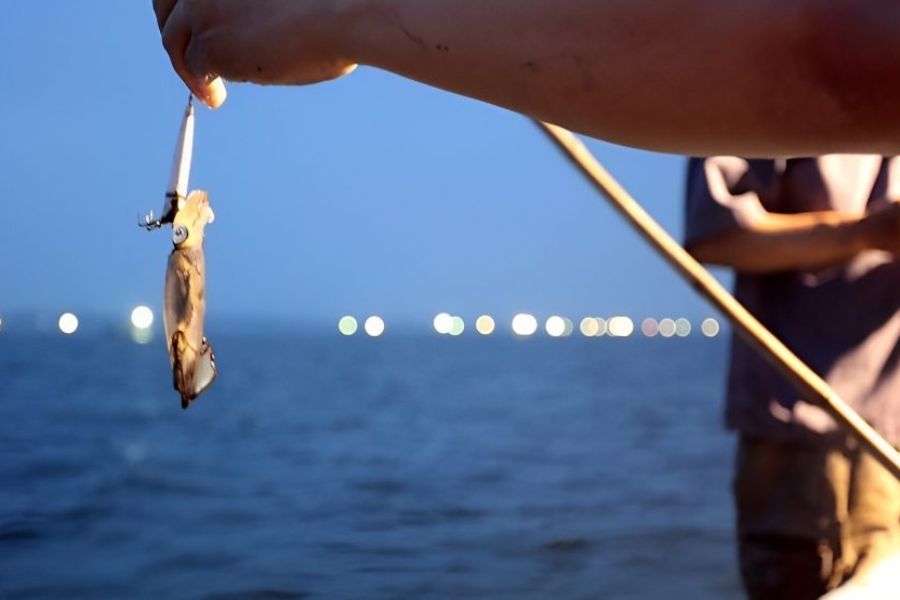
A few cruises will include a squid fishing session at night! It’s a great post-dinner activity. You may be able to catch some squid from the boat with special lights that shine so brightly they bring the creatures to the surface. It’s a nice activity, especially for those who love fishing.
Even if you do not catch anything, it’s still fun being out on the water when it’s dark and looking up at the stars and experiencing the quiet calm of the bay. Much of the time, if you catch squid, the crew may cook it fresh for you right on the boat.
Visit Pearl Farms

Many Halong Bay cruises make a stop at a pearl farm. It’s a neat educational experience where you can get a closer look at the secret life of pearl production. You will get to see how oysters are spawned and how pearls are harvested.
There, you can read about the different pearls and stages of development. There are also opportunities to buy real pearls directly from the farm. It’s a charming look at an old-school bay industry.
What To Pack For Halong Bay In February
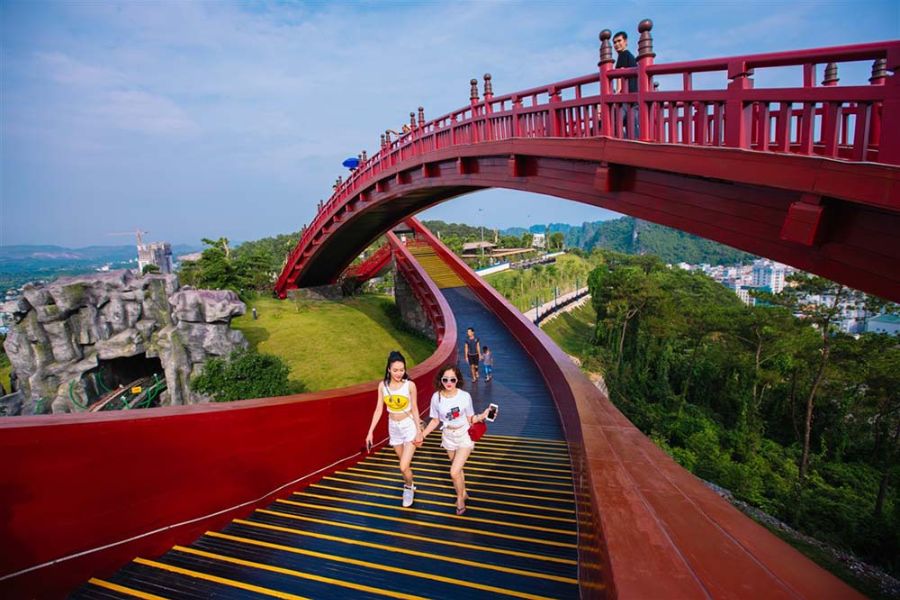
What to wear in Halong Bay in February is important. The weather can be brisk, and sometimes there is wind. Here are some necessary things that you should not miss bringing when coming to Halong Bay.
- Warm outfit: Be ready with sweaters, fleeces, or light jackets. It can get cold, especially in the mornings, at least when the boat is travelling. A warm mid-layer is essential.
- Shoes: Comfortable walking shoes or sneakers are a must. You’ll be walking on boat decks and bouncing around in caves that might be wet or uneven, and you’ll climb stairs. You should avoid open-toed sandals.
- A rain jacket or an umbrella: It’s still drier, but there can be the odd light rain or drizzle in Halong Bay in February. Bring along a waterproof jacket or a little umbrella! A windbreaker is another good idea to keep the chill off while you are on the water.
- Scarf, hat, and gloves: These are just in case and can add an extra layer of warmth, particularly if it’s windy on the boat’s sun deck or for early morning activities such as Tai Chi. Your ears will be protected from the wind with a nice warm hat.
- Sunscreen and sunglasses: UV rays can be intense, even on cloudy or foggy days, and when bouncing off the water.
- Camera: You’ll want to take pictures. Ensure that it is completely charged, and think about taking a waterproof case for your phone or camera, especially if you plan to kayak.
- Small backpack: You’ll appreciate having a daypack for day trips and to tote the essentials (water, snacks, your camera, an extra layer to take with you when you leave the main cabin).
- Portable charger: You may not have many outlets in your cabin and/or excursions, so this will help keep your electronic devices at full charge.
Travel Tips For Visiting Halong Bay In February
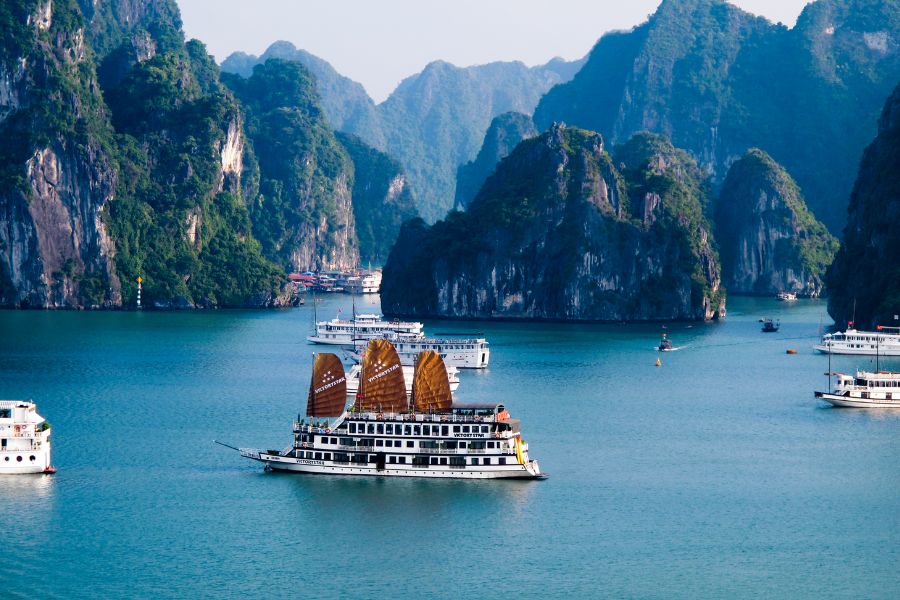
To make sure your time unfolding this UNESCO World Heritage site is as simple, convenient, and whimsical as it can be, here are some invaluable tips and hints to help you make the most of every minute there:
- Plan your cruise early: February tends to be a big month for tourists, especially if Tet (Lunar New Year) happens to be during the month. When you book this cruise at least 1-2 months in advance, you won’t be stuck with a cruise itinerary, date selection, or cabin.
- Look at the weather report: Have a look at the detailed Halong weather in February before going there. Check out a variety of sources to get a full picture. That, in turn, helps you to pack right and manage your expectations.
- Money: Credit cards are used on big cruises, but tiny vendors in markets or floating villages do not accept credit cards. Bringing cash is essential. It’s useful to have some of the smaller denominations for tips, souvenirs, or local snacks.
- Motion sickness medicine: Bring this along in case you need it for seasickness. The waters of Halong Bay are typically calm thanks to the sheltered bay. However, it is always best to be prepared. Hunker down and try natural treatments like ginger, too.
- Respect the local culture: Observe local customs and traditional practices, especially when exploring floating villages. If possible, dress modestly when dealing with villagers and always ask permission before taking anyone’s picture.
- Negotiate at markets: When purchasing from a local market off the cruise, you may need to negotiate the price of an item. It’s also something quite common to do, but be polite and smile, as always.
- Internet connection: A few cruises have Wi-Fi, but speeds may be slow or available only intermittently, particularly when sailing between islands. If you need to be connected, you can consider buying a local SIM card with data to use there.
Final Thoughts: Is February a Good Time to Visit Halong Bay?
Halong Bay in February offers cooler weather, which is suitable for outdoor activities such as kayaking, caving, and hiking. The possibility that fog may sneak up overnight gives an added, mystical allure to the landscape, making the bay feel otherworldly and out of the ordinary. Check out the experience and do not hesitate to plan your trip with SeniWorld, where you get the best of Halong Bay in a peaceful vibe.

